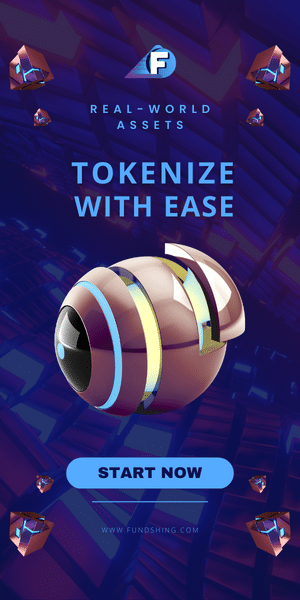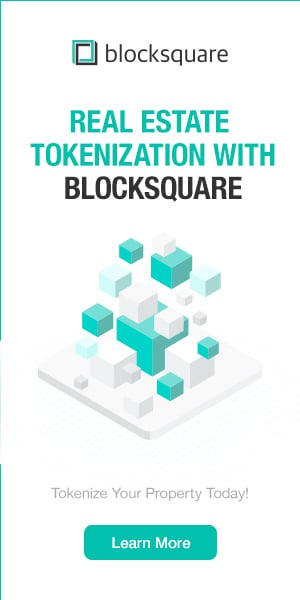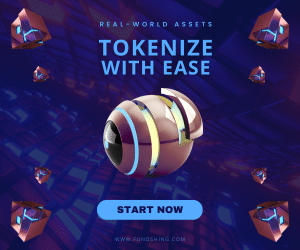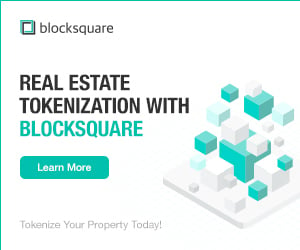Towards regulation and consolidation
An interview with Founder & CEO of Archax, Graham Rodford, part 2
It takes time to establish a new industry, but the Founder & CEO of Archax, Graham Rodford, is rock-solid confident that security tokens and the industry surrounding them are here to stay. The way forward, he believes, is to appeal to the big established industrial investors by developing solutions that enable them to utilize the advantages of tokenization within a fully compliant environment.
In this second part of the interview, Graham Rodford talks about Archax’ approach towards the traditional world of industrial investors and their view on asset tokenization. Also, he gives his opinion on the current market developments and claims that in not too long, we will start to see a consolidation of the currently much too many security token issuance platforms.
In the first part of the interview, Graham Rodford described what he sees as the three primary advantages of tokenization.
MJR: Let’s talk a bit about Archax and the idea behind the company…
GR: We were three founders that all came from the same hedge fund called Omni Partners in London. I was the COO and chief compliance officer, and I started Archax with the CFO and CTO. We thought that cryptocurrencies and digital securities were interesting asset classes that institutions wanted access to, but often they didn’t have the credible counterparty that they needed to enter the space. We wanted to be that counterparty, that was our idea. However, when we looked into the area a bit more, we found that the infrastructure was not capable of coping with institutional operational demands.
So we decided to leave the first idea and set up an exchange focused on institutions and digital securities. The idea being that we’re based in London, London’s a credible financial centre and the FinTech hub of the world, and if you are regulated in London, it’s thought of as a kind of golden seal of approval.
Consequently, we decided to become the first regulated exchange in London for digital securities. We sent our application in March of this year, and we’re hoping to be approved by the end of this year.
MJR: Approved by the FCA?
GR: Yes, and at that point, we’ll go live.
MJR: Interestingly, your history and your road to the tokenization space is very different from the typical blockchain & crypto enthusiast in the space…
GR: Exactly.
MJR: But we are beginning to see this pattern more and more frequently, and it reflects the fact that the industry of asset tokenization is highly appealing also to the incumbent industrial investors and financial players. And aren’t these groups precisely the type of clients that you want to attract with Archax?
GR: That is correct. Our expertise lies in building infrastructure that’s suitable for institutions, so they’re the types of clients we are targeting. However, we want our services to be accessible to everyone, so hopefully, brokers will be able to offer retail investors access to the space as well.
When we started at the beginning of last year, many institutions said they’re going to look into the space, even though they were mainly thinking of crypto. But then what we’ve seen over the last year is that most of the large institutions, being banks or the like, are starting to dip their toe into blockchain projects or digital security initiatives. We’ve certainly met with most of the banks and spoken to their strategic investment teams.
Also, you’re starting to see more and more people in the large asset management space move into the asset tokenization space. For instance, Franklin Templeton launched their cryptocurrency money market fund just recently. Also, Brevan Howard and Elwood are doing a billion-dollar fund now. Just in London the other day, there’s a crypto fund called Nickel that just soft closed $50 million. Those traditional finance guys run one of the most credible funds we’ve seen. The processes in place are excellent, and once you start seeing credible people moving into the space, you’ll begin viewing more money flow in as well.
MJR: So, it seems that you are not concerned on behalf of this almost new-born and still fragile industry?
GR: No, not really. There’s much work to be done and a lot of adoption that needs to take place. All we’re saying is that we want to set up a market where securities are traded – which already happens. Moreover, we want to allow SMEs globally to have access to capital markets, and already today there are several new initiatives around the world where global regulators have adapted their rules to enable SMEs to have more access to capital markets. So actually we’re flowing in the same direction of regulation there.
Also, in terms of blockchain, it’s gradually being accepted that it’s a more efficient way of running a lot of the procedures of these digital securities. So it’s not asking for a change in regulation. We’re not doing anything different to before. We’re just opening the market to more people on a more efficient technology, which is pretty much all that’s ever happened throughout time anyway.
Issuance platforms falling away
MJR: Where do you expect the market and the industry to be in one year from now?
GR: In one year, you’ll see Archax live, and maybe a couple of others globally. So I expect to see a range of early-stage digital securities on our platform. But also, I think a lot of the current primary issuance platforms will fall away, and the market will focus on the big ones. And then in two years, you’ll start to see more listings and a bit of an improvement in the types of functionality. Moreover, you will begin to get glimmers of more liquid securities moving from the old world to the new world because they realize that it’s more efficient and that they can access an increased number of capital markets.
MJR: You say that you expect a number of the issuance platforms to disappear. Could you elaborate on that?
GR: The problem is that there’s so many of them, because the barriers to entry are quite low, and because the regulation is not what it’s like to run an exchange. Also, a lot of them are white-labelling their technology because it’s quite hard for them to make revenues.
It might be that the roles split up into someone that creates the token and someone that runs the code, and then you’d have separate companies that do the last time management of the issuances, but one way or the other, I can’t see there being enough of a market for 160 token issuance platforms to make money and issue tokens.
MJR: I agree. Currently, it almost seems as if they are more issuance platforms than STOs out there, which is not sustainable…
GR: Yes, and that’s one of the reasons it’s imperative to be ahead of the big waves if you think they’re coming. And if we can get our regulatory permissions in London, then we’ve got lots of primary issuance platforms that will all want to list their tokens on our platform because they realize it’s easier to distribute their product if they’ve got a liquid outlet for it.
But yes, the number of issuance platforms is too high, it’s not a sustainable business model, and I expect that we will start to see some consolidation in the market soon.
The old world’s view on tokenization
MJR: You are approaching institutional investors represented by people with more or less the same financial background as your own. So, in your opinion, how do these investors from the traditional financial world look at the security tokenization space? Are the primarily sceptical, or do they typically see the potential quite easily?
GR: Well, it depends on whom you’re talking
to. Most of us in the digital assets space live in this bubble where we only
talk to people who understand what we’re talking about, and when you branch
outside of that, most people don’t understand some of the clear concepts. So
there’s a long way to go, but when you speak to people about investing in this
space, the problem is that one of the reasons that someone may want to buy
these securities is because of the liquidity.
Also, if there are no liquid secondary venues, like Archax, then really you’re just buying equity in digital security form, which is perhaps not as exciting as you’re being led to believe.
So if one
of your peers says, “Look, I’d like you to invest in this company, would
you like to buy some equity?” There’s usually enough hurdles to go over
anyway. If they then say, “And it’s in digital security format,” and
you say, “Well, what are the advantages of that?” Then you’re
probably going to struggle to tell them the advantages, whereas if they’ve got
a secondary market, and if they come to you and say, “Look, you know,
we’re issuing this equity, and it’s going to list on Archax, and, as you can see,
there is a liquid market should you ever wish to redeem.” Then it becomes
a bit more attractive to them.
Photo by Sebastian Bednarek on Unsplash
























